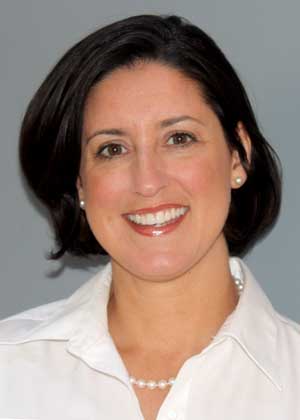
Sherry Frey
If you eat sushi and buy it at a Walgreens drug store, you’re a thoroughly modern consumer. You might also buy meat at a convenience store.
“Consumers will buy food anywhere,” says Sherry Frey. There’s been a “blurring of the lines between restaurants and grocery stores.”
Frey succeeded Steve Lutz last year as vice president at Nielsen Perishables Group in Chicago, Illinois. She spoke to apple industry leaders during the annual U.S. Apple Association Outlook and Marketing Conference.
Frey helps clients develop business strategies to meet the demands of consumers who, as a group, are ever-changing demographically and responding to changing economic signals as well.
She outlined some of the challenges apple marketers face in trying to understand their buyers and sell apples to them.
In a sense, apple growers are in a great position. One emerging trend is for people to think of food as medicine—eat right rather than take pills—and apples have had the inside track on health for decades. Of course, that is not a secure position.
Apples have been under attack from the Environmental Working Group, which listed them atop the dirty dozen list for pesticide residues, from the linkage between fruit sugars and obesity, and from doubts cast by celebrities. Growers still remember Meryl Streep’s role in the Alar scare 25 years ago.
While apple growers are quite pleased with the generally rising price of apples in recent years, Frey warns that apples need to be affordable to a wide group of people or the market can shrink.
“Prices are going up, on everything,” she said. “Wages are not going up. Consumers are leaving meat and finding alternatives. That could happen to apples.”
In recent years, growth in price and volume has been driven by consumers who like the new—and more expensive—varieties like Honeycrisp and Pink Lady, she said.
“Apples already capture key shopper groups, such as Hispanics and health-focused shoppers,” she said. They do well with larger families, with affluent consumers, and with consumers who buy premium products, but they do less well with older people, single people, price-sensitive shoppers, low-income shoppers, and consumers focused on convenience.
Frey identified four focus areas the apple industry could target for growth:
Areas of opportunity
1. Hispanic spending power. Not only do Hispanics historically like apples, they are growing in economic power in the United States. By 2015, they will have $1.5 trillion in buying power, an increase of 50 percent from 2010.
The Latino population is getting better educated, earning more, and growing across the country, outside of traditional Latino areas. They are now predominantly young and U.S. born, are becoming bilingual and bicultural, and are influencing American culture. They are focused on health and family.
2. Low-income shoppers. Due to price barriers, not all shoppers are able to buy fresh or health-focused products. They tend to buy older apple varieties—Empire, Cortland, McIntosh, Red and Golden Delicious—where retail prices are cheaper.
Their buying power could be boosted with increases in employment levels, Supplemental Nutrition Assistance Program benefits, and minimum wages.
3. Health and wellness. Products making health and wellness claims are far outpacing overall retail growth.
4. Alternative grocery channels. There is opportunity for apples to expand into alternative grocery channels, which are growing in number while traditional grocery stores are not.
There are about 33,500 grocery stores in the United States, compared with more than 41,000 drug stores, 25,000 dollar stores, and a whopping 150,000 convenience stores. Most of these alternative channels have not been tapped by apple sellers, and they are where people go for their snack foods.
People are eating more snacks and are moving away from the traditional three meals a day. The trend is away from high-fat, high-calorie, unhealthy, and processed food snacks toward low-fat, low-calorie, high-protein, and nutritional snacks.
“U.S. consumers are buying healthy snacks that can serve as small meal replacements,” Frey said. •






Leave A Comment